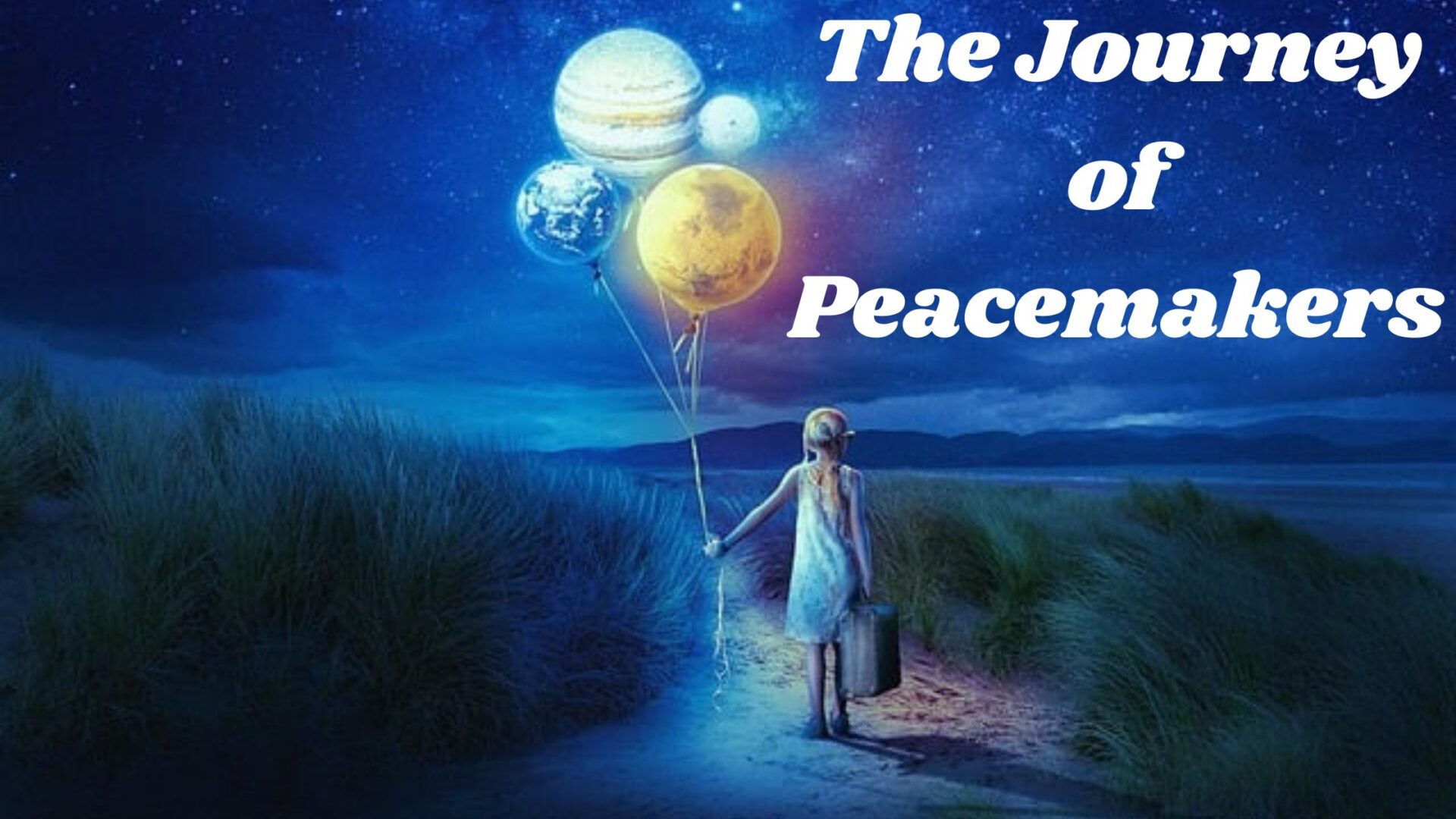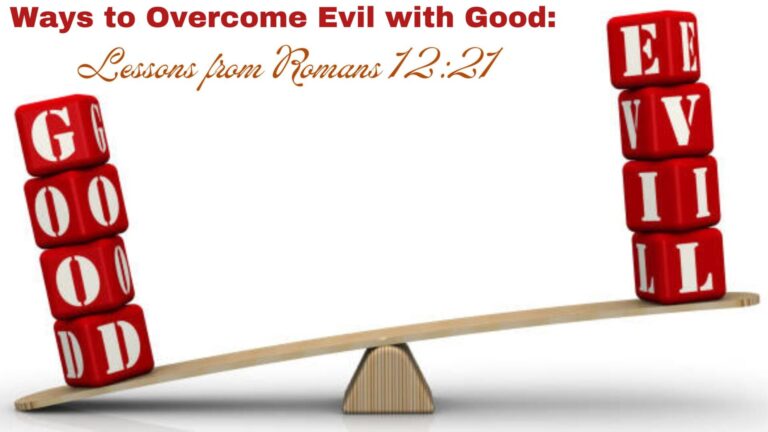Introduction:
Cultivating Peace: The Journey of Peacemakers

In a world often fraught with conflict and discord, the pursuit of peace stands as a beacon of hope and resilience. From the personal to the global scale, the journey of peacemakers is one marked by courage, empathy, and unwavering commitment. “Cultivating Peace: The Journey of Peacemakers” delves into the profound significance of peacemaking, exploring the transformative power it holds for individuals and communities alike. Through the lens of James 3:18, which states, “Peacemakers who sow in peace reap a harvest of righteousness,” this discourse embarks on a journey to unravel the profound truths embedded within the pursuit of peace.
I. The Core of Peacemaking:
Peacemaking is more than just avoiding conflict. It’s actively pursuing harmony and understanding. It involves showing empathy, communicating, forgiving, working together, ensuring justice, educating, being resilient, and having patience. At its core, peacemaking is seeing humanity in others, talking things out, and working together for a better future for everyone.
II. Promoting Peace
Sowing in peace means intentionally planting seeds of reconciliation and understanding. It starts with cultivating empathy and listening to others. It involves nurturing communication, fostering forgiveness, and promoting justice. Sowing in peace requires effort and commitment to building bridges, not walls.
III. Harvest of Righteousness
Planting peace brings a harvest of harmony. This harvest shows in mutual respect, cooperation, and a sense of shared humanity. Peacemaking turns conflict into growth and reconciliation. To reap this harvest, we must build relationships, understand each other, and commit to peace.
How can empathy and understanding shape the journey of peacemakers?”
Empathy and understanding are foundational elements in the journey of peacemakers, influencing their approach, effectiveness, and sustainability. Here’s how they shaped the journey:

- Trust Building: Empathy helps peacemakers connect with people on a deeper level. By understanding what others are going through, peacemakers can build trust and rapport. This is key for effective mediation and negotiations.
- Communication: Empathy helps peacemakers understand the root causes of conflict. This allows them to facilitate open and honest communication between conflicting parties. This creates opportunities for dialogue, mutual understanding, and the exploration of peaceful solutions.
- Healing and Reconciliation:Empathy is also crucial in promoting healing and reconciliation after a conflict. Peacemakers who empathize with the pain and suffering of those affected by conflict can create spaces for acknowledgment, forgiveness, and the rebuilding of relationships, essential for long-term peace and stability.
- Addressing Root Causes: Peacemakers with true empathy dig deeper than surface-level conflicts. They understand the underlying reasons, like economic inequality, political oppression, or cultural tensions. By approaching these root causes with compassion and understanding, peacemakers can develop lasting solutions that tackle the core issues fueling the conflict.
- Resolving Differences:Empathy allows peacemakers to look beyond differences in beliefs, religion, culture, or race. Instead of seeing these differences as obstacles to peace, empathetic peacemakers view them as chances to learn, grow, and work together. By encouraging empathy between opposing sides, peacemakers can bridge gaps and find common ground for resolution.
- Sustaining Peace:Long-lasting peace is built on a foundation of empathy and understanding. Peacemakers who make empathy a priority are more likely to create inclusive processes that involve everyone affected. This creates a sense of ownership and commitment to peace, increasing the chances of long-term stability.
Empathy and understanding are essential to peacemaking. They help peacemakers build connections, heal wounds, and address the root causes of conflict. In the end, empathy and understanding help create a more peaceful and fair world.
How do peacemakers navigate challenges and setbacks in their journey?
Peacemakers face many obstacles when working to resolve conflicts and promote peace. They need resilience, adaptability, and a plan to overcome these challenges. Here are some ways peacemakers can do this:
Building resilience:
– Peacemakers face resistance and skepticism.
– They stay strong by believing in peace and positive change.
Adapting strategies:
– Peacemakers are flexible and change their plans when needed.
– They try new things and work with different people.
Building coalitions:
– Peacemakers work with others who share their goals.
– They combine their efforts and resources to make a bigger impact.
Peacemakers have strong support networks.
-These networks include friends, teachers, advisors, and groups affected by conflict.
-These networks give emotional support, practical advice, and resources to help peacemakers with challenges and setbacks. Peacemakers lean on their support networks for encouragement, feedback, and solidarity during difficult times.
Setbacks and failures happen in peacemaking.
-Peacemakers see these as chances to learn and grow. They think about what went wrong and use those lessons to do better in the future.
-By learning and adapting, peacemakers become more effective over time.
Staying Committed to Principles
-Peacemakers stay true to their principles, like non-violence, including everyone, and human rights. They use these values to guide their actions and decisions, even when things are tough.
-By staying true to their principles, peacemakers build trust and respect, which are important for their work.
Navigating challenges in peacemaking requires resilience, adaptability, collaboration, learning, and a strong commitment to core principles. By using these strategies, peacemakers can overcome obstacles and keep working towards their goal of spreading peace and justice in conflict-affected areas.
“What impact does education and awareness have on the journey of peacemakers?”
Education and awareness play a significant role in shaping the journey of peacemakers, influencing their approach, effectiveness, and long-term impact. Here’s how education and awareness impact peacemakers:

Education for Peacemakers
Education is very important for peacemakers. It provides them with the knowledge and understanding of the complex underlying causes of conflicts, such as socio-economic inequality, political exclusion, and cultural tensions. By understanding these root causes, peacemakers can develop comprehensive solutions that address the structural drivers of conflict.
Promoting Dialogue and Communication
Education also promotes critical thinking, empathy, and communication skills. These skills are essential for facilitating dialogue and understanding between conflicting parties. Well-educated peacemakers can have productive conversations, bridge divides, and foster mutual understanding. These skills are vital for building trust and finding common ground to resolve conflicts.
Empowering Communities:
Furthermore, education empowers individuals and communities affected by conflicts. It enables them to express their needs, rights, and aspirations. By prioritizing education and awareness-raising initiatives, peacemakers empower communities to actively participate in the peace process. This fosters ownership, agency, and the development of sustainable solutions from within.
Education for Peace
Education gives people the chance to speak up for peace, social justice, and human rights. Peacemakers who know a lot can talk to government leaders, groups that help people, and the general public to push for rules and actions that bring peace, fairness, and acceptance.
Preventing Conflict
Education is a strong tool to stop conflict by fixing problems, encouraging tolerance, and creating a peaceful culture. Peacemakers who invest in education and raising awareness early can lower the risk of violence, extreme beliefs, and radicalization by promoting values like non-violence, diversity, and respect for human rights.
Building Lasting Peace
Education builds a foundation for lasting peace by teaching future generations to be tolerant, understanding, and willing to work together. Peacemakers who make education a main part of their peacebuilding efforts invest in the long-term stability and success of communities affected by conflict. They break the cycle of violence and build a culture of peace that will last for many generations.
Conclusion:
In conclusion, “Cultivating Peace: The Journey of Peacemakers” serves as a testament to the enduring relevance and profound significance of peacemaking in today’s world. From fostering understanding and reconciliation to sowing seeds of righteousness, peacemakers play a vital role in shaping a more harmonious and just society. As we heed the call to sow in peace, may we reap a bountiful harvest of righteousness, paving the way for a future defined by compassion, empathy, and unity.
FAQs (Frequently Asked Questions):
- What is the role of forgiveness in the peacemaking process?
Forgiveness plays a crucial role in the peacemaking process as it enables individuals and communities to move forward from past grievances and conflicts. By letting go of resentment and seeking reconciliation, parties involved can foster healing, rebuild trust, and pave the way for sustainable peace.
- How can individuals overcome barriers to effective communication during conflicts?
Overcoming barriers to effective communication during conflicts requires active listening, empathy, and a willingness to understand the perspectives of others. Individuals can enhance communication by practicing patience, using non-violent language, seeking common ground, and engaging in constructive dialogue rather than resorting to blame or defensiveness.
- What are some practical strategies for promoting peace within families and communities?
Practical strategies for promoting peace within families and communities include fostering open communication, resolving conflicts through dialogue and negotiation, promoting empathy and understanding, investing in education and economic opportunities, addressing underlying inequalities, and building social cohesion through community-based initiatives.
- How does peacemaking contribute to the resolution of larger societal conflicts? Peacemaking contributes to the resolution of larger societal conflicts by addressing root causes, building trust between conflicting parties, promoting dialogue and reconciliation, advocating for policy change, mobilizing public support, and fostering sustainable peacebuilding efforts that address the needs and aspirations of all stakeholders.
References:
- The Holy Bible, New International Version (James 3:18)
- “The Anatomy of Peace: Resolving the Heart of Conflict” by The Arbinger Institute
- “Nonviolent Communication: A Language of Life” by Marshall B. Rosenberg
- “A Peace to End All Peace: The Fall of the Ottoman Empire and the Creation of the Modern Middle East” by David Fromkin
- “The Peacemaker: A Biblical Guide to Resolving Personal Conflict” by Ken Sande
- “Peace Is Every Step: The Path of Mindfulness in Everyday Life” by Thich Nhat Hanh
- “The Moral Imagination: The Art and Soul of Building Peace” by John Paul Lederach
- “The Anatomy of Peace: How to Resolve the Heart of Conflict” by The Arbinger Institute
- “Peacemaking Circles: From Crime to Community” by Kay Pranis, Barry Stuart, and Mark Wedge
- “Building a Culture of Peace” by UNESCO








